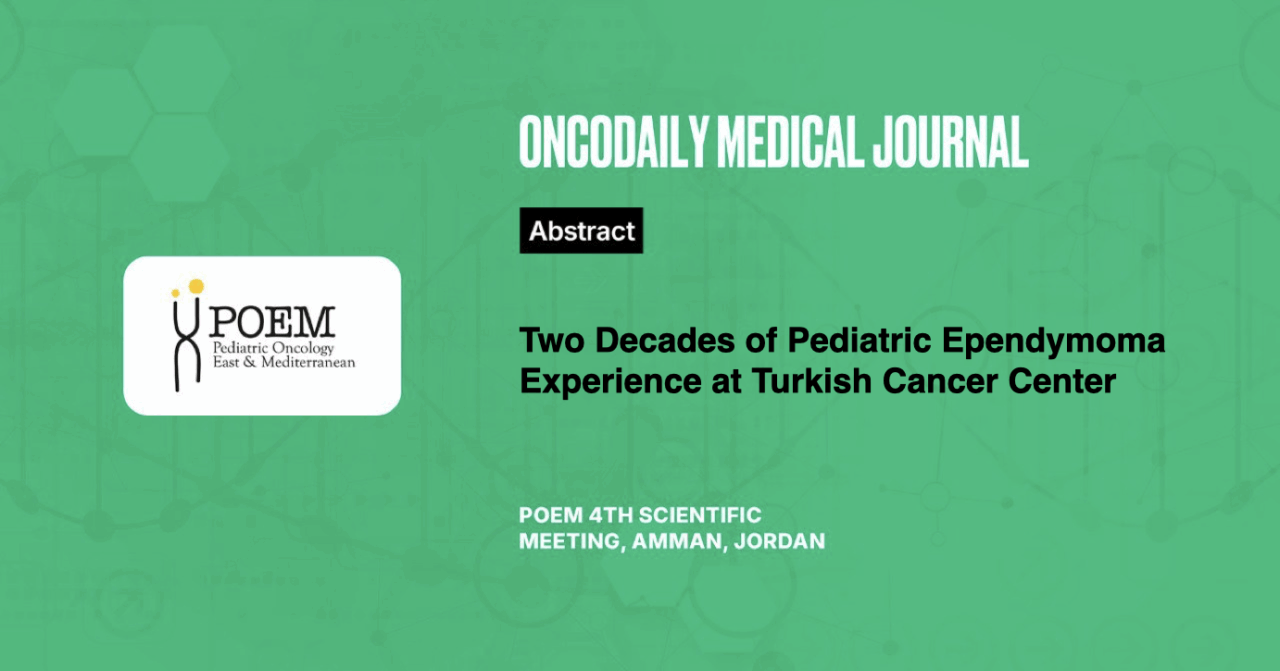Two Decades of Pediatric Ependymoma Experience at Turkish Cancer Center
Abstract
Introduction: Ependymomas are the third most common CNS tumors in children. Divided between supratentorial, infratentorial, and spinal locations, there are at least 9 molecular subtypes. We aim to review our experience in treating children with ependymoma at Ankara Bilkent City Hospital.
Methodology: We reviewed the medical records of children <18 years old at the time of diagnosis with ependymoma and who were followed between 2006 and 2024. We evaluated their clinical characteristics, treatment, and outcome.
Results: Thirty-two patients (56% males) were identified. The median age at diagnosis was 6.7 years (range, 0.6–17 years). Nineteen tumors (64%) were infratentorial, 7 (22%) supratentorial, and 6 (19%) were spinal. Seventeen tumors (53%) were Grade 2 histology. Sixteen patients (50%) underwent gross total resection (GTR), 15 (47%) underwent subtotal resection (STR), and one had a tumor biopsy. Radiotherapy was given to 20 patients (63%), and chemotherapy to 14 (44%). Relapse was observed in 14 patients (44%) at a median of 18 months (range, 3-58 months). Among these patients, four received chemotherapy, one received radiotherapy, and four received both. With a median follow-up of 28 months (range, 2–150 months), the 5-year event-free survival (EFS) and overall survival (OS) were 44% and 89%. The 5-year EFS was 34% for posterior fossa ependymomas, 51% for supratentorial, and 100% for spinal tumors (p=0.66), while the 5-year OS was 87%, 86%, and 100%, respectively (p=0.48). In univariate analysis, the factor affecting EFS was GTR (5-year EFS 69% in GTR vs. 0% in STR, p=0.08). This effect was also observed in multivariate analysis (STR: RR=2.4, 95% CI: 1.3–4.6, p=0.005). Three patients (9%) died. Among 29 surviving patients (median follow-up: 40 months, range: 2-152), 9 (31%) had active disease.
Conclusions: The best outcomes were observed in patients who underwent GTR. The EFS/OS rates were comparable to the literature. Our findings suggest that chemotherapy and radiotherapy in relapsed ependymoma may prolong survival.





